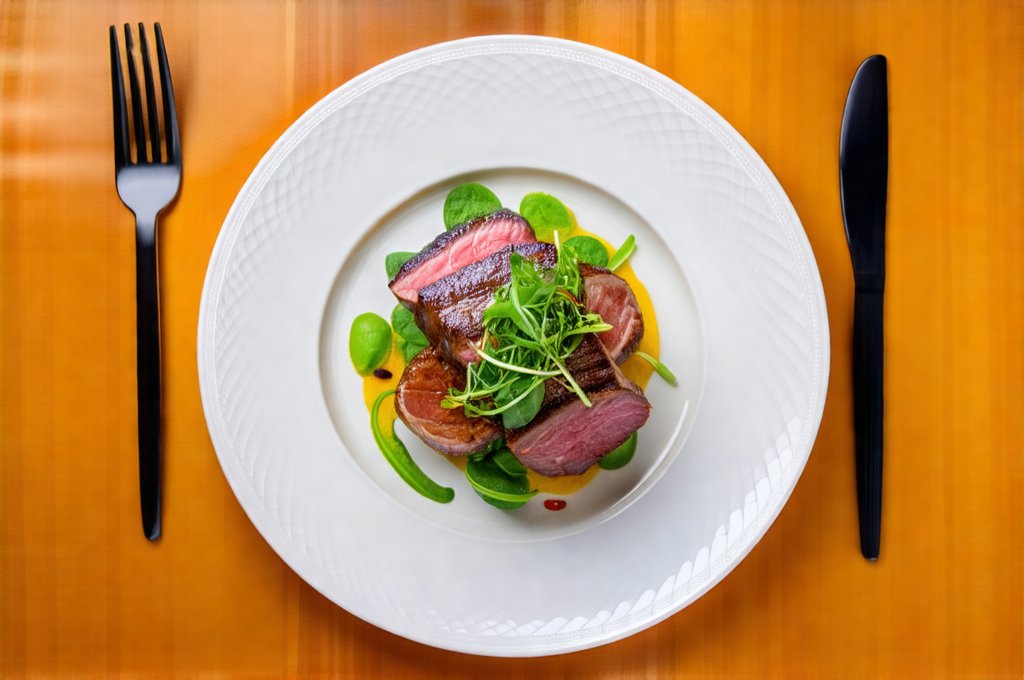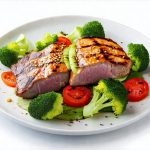Navigating the world of dining out can be fraught with anxiety for individuals managing Irritable Bowel Syndrome (IBS) or Gastroesophageal Reflux Disease (GERD). The joy of experiencing new cuisines and socializing over meals often clashes with the fear of triggering uncomfortable symptoms like bloating, abdominal pain, heartburn, or acid reflux. Many feel limited in their choices, resorting to bland options or avoiding restaurants altogether. However, a mindful approach—one that combines understanding your specific triggers with informed ordering strategies—can significantly expand your dining possibilities and allow you to enjoy eating out without compromising your well-being. This isn’t about restrictive dieting; it’s about empowering yourself to make choices that support digestive health while still savoring the pleasures of food and social connection.
The key lies in recognizing that “gut-friendly” doesn’t mean sacrificing flavor or variety. It simply means being proactive and informed. Understanding how different foods impact your individual system is paramount, as triggers vary greatly from person to person. What causes discomfort for one IBS sufferer might be perfectly tolerable for another, and GERD sensitivities differ too. This article aims to provide a practical guide to navigating restaurant menus with confidence, offering specific ordering suggestions tailored to both conditions, and empowering you to advocate for your dietary needs when dining out. We’ll explore how to decode menu descriptions, identify potential problem ingredients, and communicate effectively with restaurant staff to ensure a comfortable and enjoyable experience.
Decoding the Menu: IBS & GERD Considerations
Restaurant menus can often be deceptive, using enticing language that obscures potentially problematic ingredients. For individuals with IBS, understanding FODMAPs (Fermentable Oligosaccharides, Disaccharides, Monosaccharides and Polyols) is incredibly useful. These are short-chain carbohydrates that are poorly absorbed in the small intestine, leading to fermentation in the large intestine and potential symptoms like gas, bloating, and diarrhea. Common high-FODMAP ingredients frequently found on menus include garlic, onions, wheat, dairy (lactose), certain fruits (apples, pears, mangoes), legumes, and sweeteners like honey and high-fructose corn syrup. For those with GERD, the focus shifts to minimizing foods that trigger acid reflux. These typically include fatty or fried foods, spicy dishes, chocolate, caffeine, alcohol, citrus fruits, tomatoes, and peppermint. It’s crucial to remember that these are general guidelines; your personal trigger foods may differ. If you’re traveling by bus or train, reviewing eating while traveling tips can be helpful for meal planning.
Furthermore, cooking methods play a significant role. Fried foods are generally problematic for GERD sufferers due to their high fat content, while excessive oil can also exacerbate IBS symptoms in some individuals. Sauces and dressings often contain hidden ingredients like garlic or onion powder, so it’s important to inquire about their composition. Even seemingly harmless dishes can be problematic if prepared with trigger ingredients. For example, mashed potatoes might sound safe but could contain dairy or garlic; a salad dressing could include high-FODMAP sweeteners. The art of dining out successfully involves becoming a “menu detective,” scrutinizing descriptions and asking clarifying questions. Don’t hesitate to request modifications – most restaurants are happy to accommodate dietary needs when informed.
Smart Ordering Strategies for Restaurant Meals
When ordering, focus on lean protein sources prepared simply—grilled or baked rather than fried. Chicken breast, fish, or tofu are good options. Pair these with easily digestible carbohydrates like rice, quinoa, or gluten-free pasta (if tolerated). Vegetables should be steamed, grilled, or roasted – avoid creamy sauces or excessive seasonings. For GERD sufferers, smaller portions are often better to reduce the risk of overfilling the stomach and triggering reflux. Similarly, eating slowly and thoroughly chewing food can aid digestion and minimize symptoms. With IBS, consider avoiding carbonated beverages, which can contribute to bloating. Water is always your best bet! Understanding drinks to avoid with IBS or bloating is also a good preventative measure.
Communicating your dietary needs clearly is essential. Don’t be afraid to explain your condition (briefly) to the server and request modifications. For example, you could say: “I have a sensitive stomach and need to avoid garlic and onions.” Or, “I have GERD and would like my meal prepared without any spicy seasonings or excessive oil.” Be specific about your requests – asking for “no dairy” is more helpful than simply saying you’re lactose intolerant. When in doubt, ask the server to check with the chef regarding ingredients and preparation methods. Remember that a proactive approach—asking questions and making informed choices—is key to enjoying a comfortable dining experience. Considering nutrition support can also give you more confidence in your dietary decisions.
Navigating Common Cuisine Types
Different cuisines present unique challenges and opportunities for individuals with IBS or GERD. Italian restaurants can be tricky due to the prevalence of garlic, onion, tomato-based sauces, and creamy pasta dishes. Opt for grilled fish or chicken with a side of steamed vegetables and rice. Request olive oil and balsamic vinegar instead of traditional tomato sauce. Gluten-free pasta is often available as an alternative. Mexican cuisine, known for its spicy flavors and fried foods, requires careful navigation for GERD sufferers. Choose lean protein tacos (grilled chicken or fish) on corn tortillas with minimal toppings—avoid guacamole, sour cream, and salsa. For IBS, be mindful of beans and onions in fillings. Asian restaurants offer a wider range of options but often use soy sauce (which can be high FODMAP for some) and MSG. Request low-sodium soy sauce or tamari (gluten-free). Steamed rice and stir-fried vegetables are generally safe choices; avoid deep-fried dishes and spicy sauces. If you experience nausea, anti-nausea eating habits can provide relief.
The Art of Asking Questions
Don’t assume anything! Even if a dish appears safe on the menu, always inquire about its preparation methods and ingredients. – What kind of oil is used for cooking? (Avoid fried foods or those cooked in excessive oil.) – Does the sauce contain garlic or onion? (These are common FODMAPs and can trigger GERD.) – Is the broth made with tomatoes? (Tomatoes can exacerbate GERD symptoms.) – Can I substitute a side of steamed vegetables for fries? (A healthier option for both conditions.)
Dealing With Unexpected Flare-Ups
Despite your best efforts, unexpected flare-ups can sometimes occur. It’s helpful to be prepared for this possibility. Carry any necessary medications with you—antacids for GERD or anti-diarrheal medication for IBS. If you experience symptoms while dining out, politely excuse yourself and take a moment to address the issue. Don’t hesitate to inform the server if needed – they may be able to offer assistance or suggest alternative options. Remember that a momentary discomfort doesn’t have to ruin your entire evening; it’s simply a reminder to continue refining your ordering strategies and understanding your individual triggers. Focusing on relaxation techniques like deep breathing can also help manage symptoms. Taking a walk after eating may also help alleviate discomfort, depending on the situation. Planning ahead for safe holiday eating with holiday eating tips can also prepare you for social dining events. Finally, choosing the right cooking oils is important – explore cooking oil options.


















